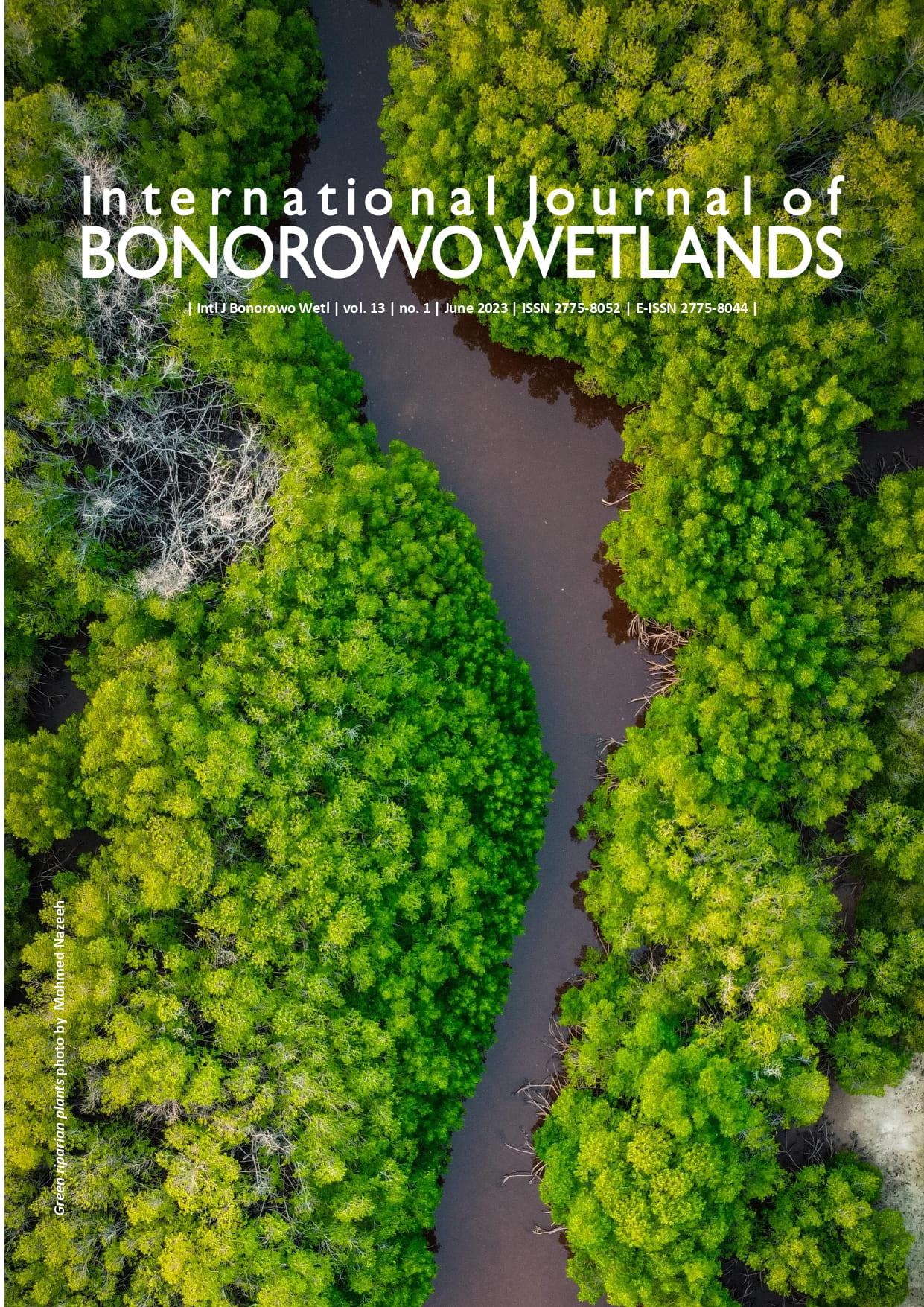Assessment of water quality with comparative study of soil organic carbon stock in Nagdaha Lake and its adjacent agricultural land of Lalitpur, Nepal
##plugins.themes.bootstrap3.article.main##
Abstract
Abstract. Bhatta M, Joshi R. 2023. Assessment of water quality with comparative study of soil organic carbon stock in Nagdaha Lake and its adjacent agricultural land of Lalitpur, Nepal. Intl J Bonorowo Wetlands 13: 9-16. The lakes are an important component of the terrestrial Carbon (C) cycle. Estimates of global C burial by lakes suggest burial rates ranging from 0.03-0.07 Pg C yr?1. In the present study, the water quality of Nagdaha Lake and comparative analysis of Soil Organic Carbon (SOC) in Nagdaha Lake and its adjoining agricultural area has been studied. Water quality was determined following APHA (1998); SOC was determined by the Walkey and Black (1934) Titration Method. The present study results show that the mean N-nitrate and P-phosphate concentration in the waters of Nagdaha Lake is 0.135 mg/L and 0.123 mg/L, respectively, and the mean SOC concentration of Nagdaha Lake (71.39±42.58g kg-1) is higher than the adjacent agricultural land (14.36±8.38g kg-1). The t-test result also shows that there is a significant difference in SOC concentration in lakes (t = 9.18) and agricultural (t = 7.66) for agricultural land (p < 0.0001). Nagdaha Lake's area decreased from 52 ropani to 42 ropani between 1964 and 2022. Despite the decrease in area, Nagdaha Lake has more carbon per unit area than agricultural land. Since the conversion of lake land to agricultural land can release a large amount of carbon into the atmosphere, it is imperative to preserve the lakes to mitigate increasing atmospheric CO2 concentration.

